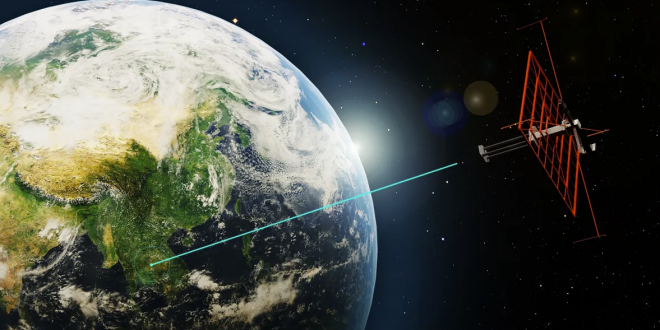In Simcity 2000, a computer game, there was a future energy factory known as a microwave power plant. This facility absorbed solar energy in space and then transported it back to Earth. The concept has been transformed into an actuality. Since June of the previous year, a space experiment has been using solar panels on a spacecraft in orbit to transfer energy to Earth. We now have the first findings about the progress of the project.
The Space Solar Power Demonstrator (SSPD) has shown the feasibility of power transmission in space and from space to Earth via the use of their Microwave Array for Power-Transfer Low-Orbit Experiment (MAPLE). For the first time, solar electricity has been successfully transferred from orbit, marking a significant milestone that might pave the way for the development of a space-based solar power plant.
Initially introduced in January 2023, the gadget swiftly achieved the capability to transmit around 100 milliwatts of electricity wirelessly and had the flexibility to redirect the beam in any desired direction. The experiment transmitting electricity to Earth yielded an approximate power output of 1 milliwatt, and it was carried out on three separate occasions over a duration of eight months.
The concept entails constructing a modular spacecraft constellation with a size of around one kilometer, capable of transmitting a sufficient amount of electricity to meet the energy needs of 10,000 households. The individual 1-meter cube satellites will expand into a flat square of 50 meters (164 feet) on each side. One side of the square will be equipped with solar cells, while the other side will have microwave transmitters. The versatility of MAPLE allows for energy transfer in any direction, enabling direct delivery of energy and electricity to a distant area or in emergency situations without the need for transmission infrastructure.
“Just as the Internet made access to information available to everyone, we aim for wireless energy transfer to make access to energy available to everyone,” said Ali Hajimiri, the principal researcher and co-director of SSPP, in a statement last year.
“There will be no requirement for energy transmission infrastructure on the ground to receive this power.” This implies that we have the capability to transmit electricity to distant locations and regions that have been severely affected by either conflict or natural calamities.
Alongside MAPLE, the SSPD is conducting tests on additional components, including DOLCE (Deployable on-Orbit UltraLight Composite Experiment) to assess the spacecraft’s architectural deployment structure and ALBA to determine the optimal kind of solar cells for use. Information on them has not yet been disclosed; nevertheless, they are crucial elements for the SSPD.
Since this experiment is now in the proof-of-concept stage, the newly published preprint article emphasizes several shortcomings in the design and identifies areas that need development. The next iteration will use the qualities of the current version and get closer to achieving a fully operational prototype.
The paper is now for peer review and may be accessed on ArXiv.
 Tech Gadget Central Latest Tech News and Reviews
Tech Gadget Central Latest Tech News and Reviews




